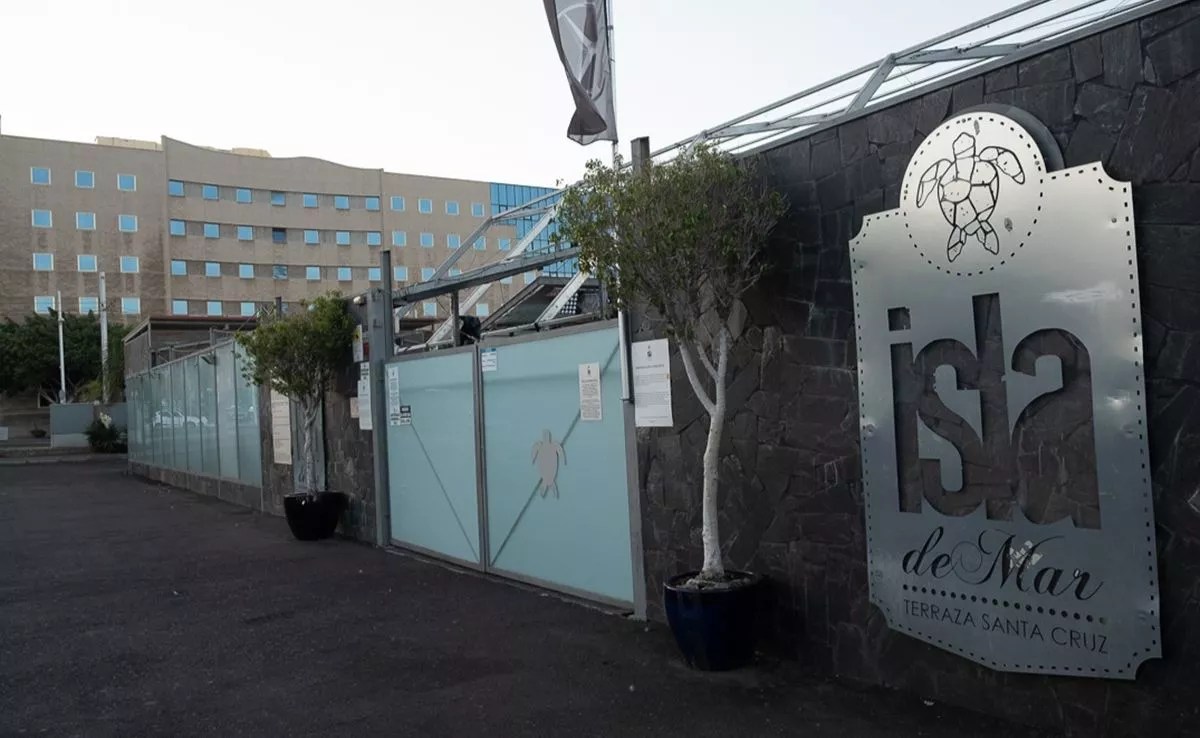A pioneer engineering work in the world will allow to unite the electrical networks of Tenerife and La Gomera through a cable of more than 42 kilometers long. electrical networka Redeia Group company, invests 114 million euros in an action that officially began this Monday, March 20, 2023 and that will allow the generation of a “more robust, efficient and sustainable” joint system which will also open the door to La Gomera can be supplied 100% with clean energy.
The cable, which has integrated fiber optics, will travel more than six kilometers underground and another 36 under the seato one record depth of 1,145 meterswhich will make this tripolar alternating current cable “the deepest in the world”, as reported by the president of Redeia, Beatriz Corredor. He also stressed during the presentation this Monday at the location of the future Chío substation that this connection “will be a technological milestone” due to details such as the great weight of the cable, “which will force the use of a special ship to lay it, capable of supporting its weight and traction.” Each meter of cable weighs about 50 kilos, about 50,000 kilos per kilometer, more than 1,800 tons in total.
The electrical system in the Canary Islands is “isolated and ultra-peripheral”, warned Corredor, so that the existing union between Fuerteventura and Lanzarote, and the one that has just begun between Tenerife and La Gomera, will allow “to make this system bigger, safer and more stable.” Some performances that will serve to advance in the decarbonization of the Archipelago through the development of renewable energy and storage systems, such as pumping stations.
Thanks to this new link. whose commissioning is scheduled for 2025La Gomera will be able to generate more renewable energy than the total demand of the island, which will allow Tenerife to take advantage of the rubber surpluses.
Red Eléctrica allocates 114 million euros to the installation of the deepest tripolar cable on the planet, at a maximum depth of 1,145 meters
The President of the Canary Islands, Ángel Víctor Torres, stressed that this project is “one more step towards the total decarbonization of the Canary Islands in 2040” and “will facilitate the reduction of electricity generation costs and contribute to less dependence on fossil fuels, while producing an environmental improvement” . Contributes to continue advancing in the greater participation of renewable energies in the energy balance of the Canary Islands, “which in this term has gone from 10 to 20%”.
He Commissioner for the Promotion of Sustainable Energy in Island Systems, Marc Pons, said that «the Government of Spain wants to make the archipelagos the spearhead of the decarbonisation of the country. Territories on which to promote initiatives that can be replicated on the continent, with the aim of accelerating an unstoppable energy transition”.
Five new wind farms
The president of the Cabildo de La Gomera, Casimiro Curbeloadvanced that, with the commissioning of five new wind farms on his island, “it will be possible to generate more energy than it currently consumes” and, with this electrical interconnection, it will be possible to transport that surplus to Tenerife and contribute to strengthening systems that “They are very fragile and avoid new energetic zeros.”
The insular vice president, Enrique Arriaga, valued “the effort of administrations and companies to reduce the carbon footprint”. AND the mayoress of Guía de Isora, Josefa Mesaconcluded that “the future lies in projects like this, which are committed to sustainability and which will benefit the inhabitants of both islands.”
€114 million
The planned investment in the complex work of this new submarine electrical link exceeds 114 million euros, and it is expected that it can enter into service in 2025.
6.2 kilometers underground
Before submerging into the seabed, the cable that will connect the electrical networks of both islands will cover 5.3 kilometers underground in Tenerife and almost one kilometer in La Gomera.
36 kilometers under the sea
This double circuit line of 66 kV, in alternating current, will run for 36 kilometers under the sea, at depths of up to 1,145 meters. A record for a cable of this type.

















